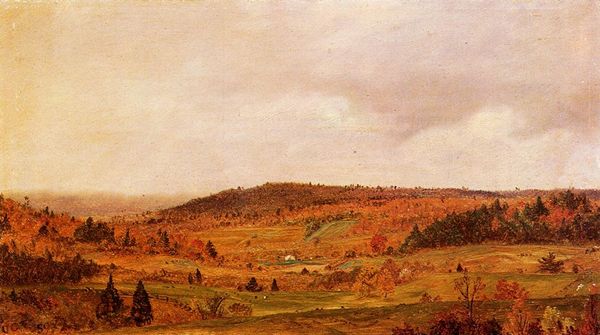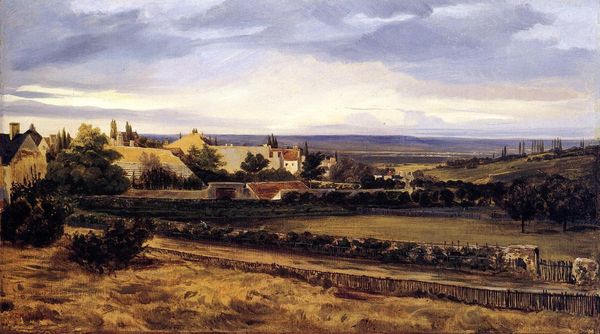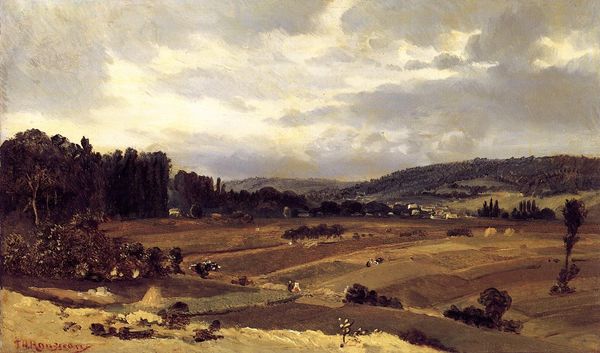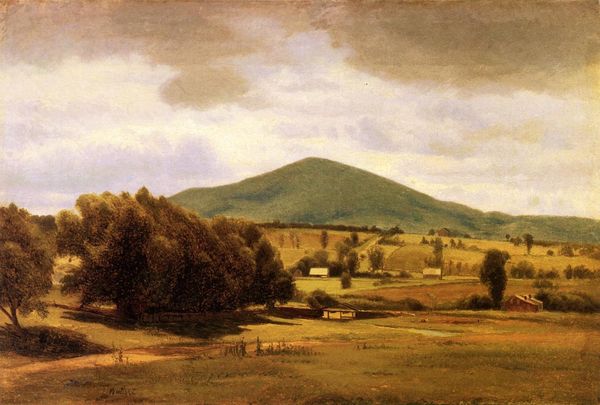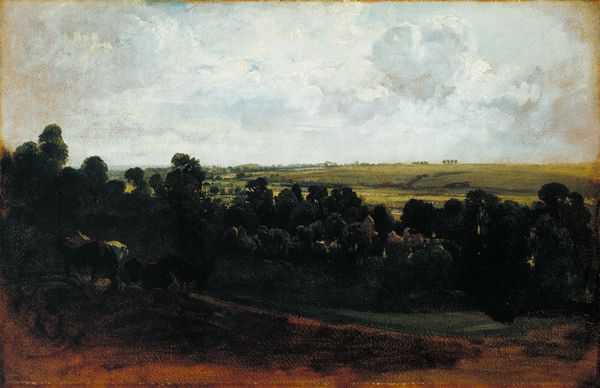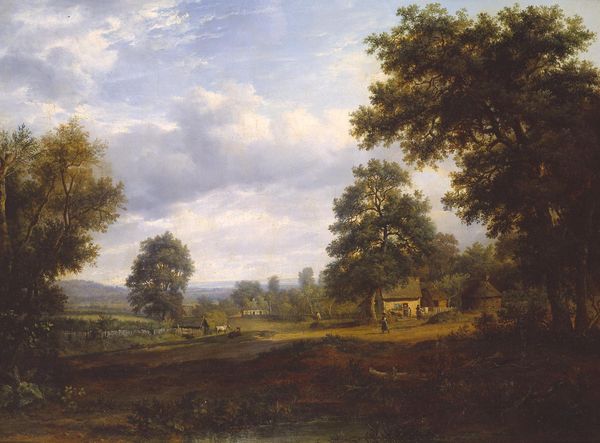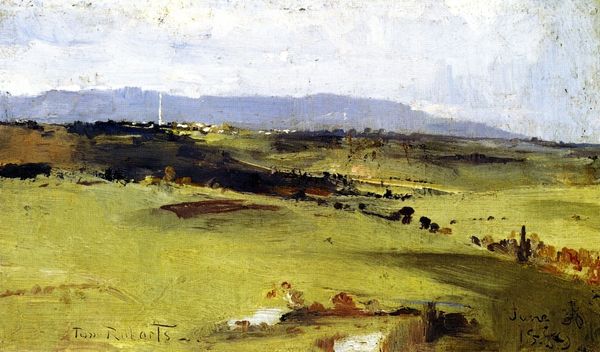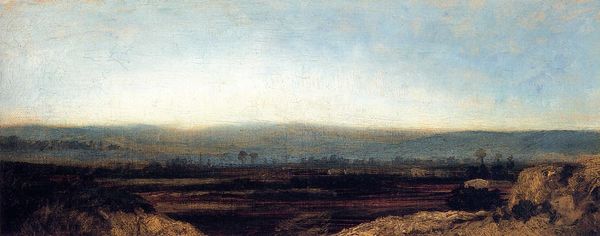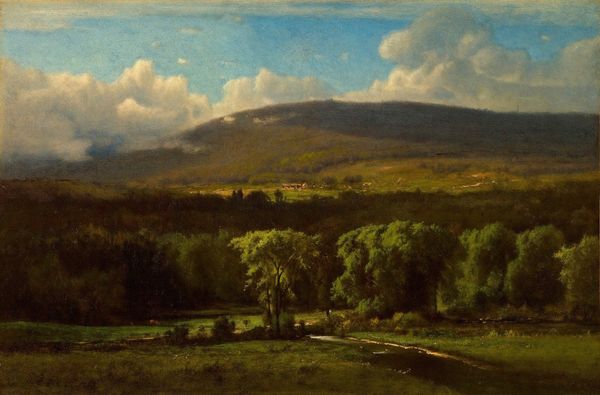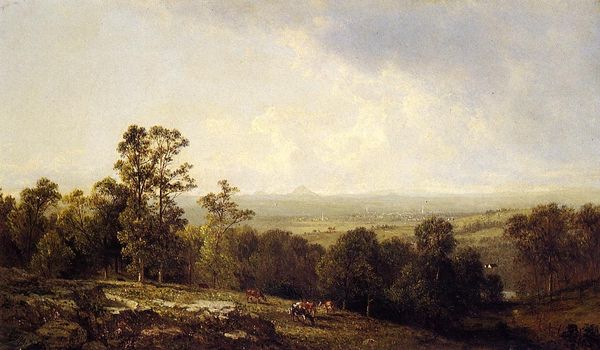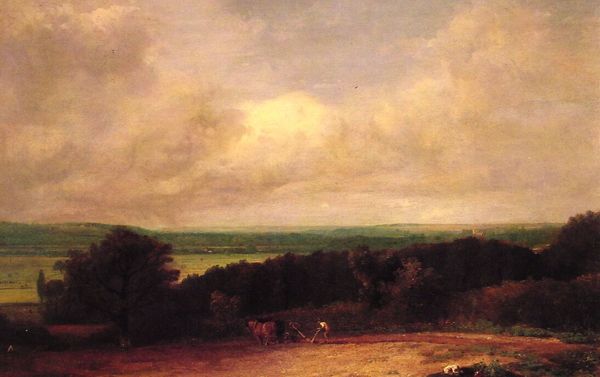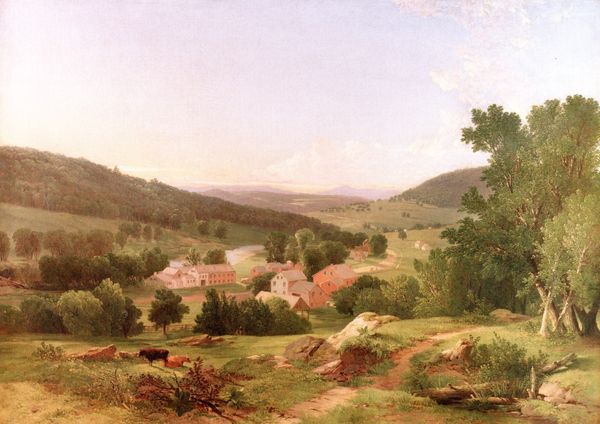
Copyright: Public domain
Editor: Take a look at this beautiful landscape painting, Landscape of Jura Arbois from 1861 by Theodore Rousseau, created with oil paint. I’m immediately drawn to how Rousseau captures the rural atmosphere; it feels both vast and intimate at the same time. What aspects of the artwork do you find most compelling or important? Curator: What I see is a specific engagement with the evolving role of landscape painting in the mid-19th century. Here, Rousseau presents not just a pretty view, but also a visual argument about the relationship between humans and the land, industry and nature. How does this image reflect the changing French countryside during that time, in your opinion? Editor: Well, you see the rural life represented with the person plowing a field, which looks peaceful. I am sure rurality was an important part of French identity during this time? Curator: Precisely! There's a deliberate grounding in the French countryside. Yet, consider what's *not* shown. Where are the burgeoning factories? Where is the evidence of industrial incursion? By emphasizing the timeless quality of the landscape and agriculture, what kind of statement might Rousseau be making about societal values? Editor: I think the statement he is trying to convey with this image is the glorification of nature. Curator: Exactly. So, with that said, let’s think about where these images were exhibited. Understanding these historical contexts of display highlights a clear political stance on Rousseau’s part. Editor: This gives me a lot to consider about the relationship between the art and the sociopolitical conditions of that time. I see what I would’ve overlooked on my own! Curator: Indeed. Examining the history behind visual art allows us to examine society through the different art forms. It’s all interwoven.
Comments
No comments
Be the first to comment and join the conversation on the ultimate creative platform.
